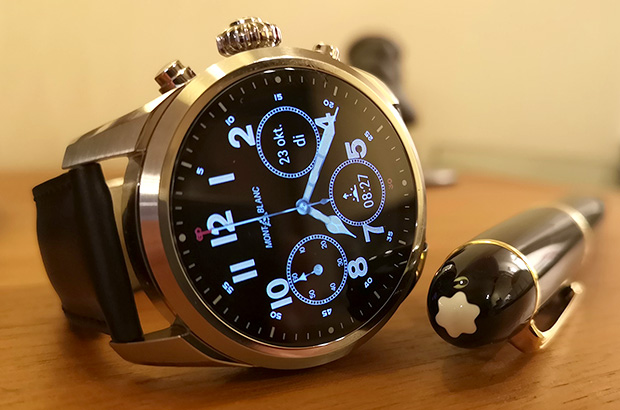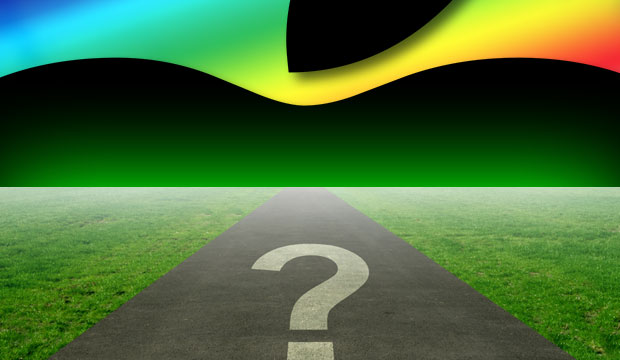Last week Apple announced a partial pivot away from x86 to ARM with one of those claims so outrageous it could have only come from Apple.
The company claimed its new ARM-based PCs would outperform 98 percent of those already in the market. No proof points, no material examples, no listed benchmarks. Just “trust us,” this processor optimized for smartphones is magically better than processors designed to run PCs.
Apple also left out essential elements like application support, developer backing (which appears light), and even how much longer they will continue to support their x86 offerings which appear to be suddenly obsolete.
I’ve had several conversations with other PC OEMs, and they quietly lament that their legal teams won’t let them make claims like this for fear of false advertising class action lawsuits.
Let’s talk about that this week — and we’ll close with what may be the best Apple Watch killer yet: the Montblanc 2+ connected smartwatch, which is my product of the week.
Apple’s Rule of 3
The experienced Apple customer knows to take Apple’s claims about new products with a grain of salt. The iPod was a game-changing revolutionary product if you were, as I was, at its launch. But it took three years and three versions to mature to the point where most people would buy it.
It is interesting to note that Sony, with its Walkman, never created a viable alternative. This result was because Sony was too focused on protecting its intellectual property (the music titles they owned) and not concerned enough about making its products easy to use.
The iPhone was largely non-functioning when it was first shown and a horrid phone when launched. It wasn’t even clear where the applications would run. After the third version, though, it was leading the smartphone segment in both sales and innovation.
Apple won because those that dominated the market believed that smartphones were only for business, not for individuals. This belief resulted in Microsoft and Palm killing early efforts that preceded the iPhone to do the same thing. Then, instead of defending their supposedly deep beliefs, they pivoted and tried to chase Apple.
This result was much like what happened with IBM and the mainframe in the 1980s. I should point out that IBM changed its mind and reinvested in the mainframe, turning it again into its most profitable hardware offering. This last suggests that had Research in Motion, Palm, and Microsoft moved to defend, they might still be large smartphone players.
The lesson here is to pretty much disregard a new Apple offering until it is on its third version. So buy something you’ll love, not something that is still too immature for the market.
Jobs vs. Cook
When Steve Jobs would pivot, he tended to do so dramatically. He’d then use an enormous amount of marketing to convince a critical mass of folks to move with him. In efforts like this, Jobs could be frugal, but not cheap. He was one of the few CEOs who truly understood how marketing could manipulate a market — a skill Jobs picked up when he studied India’s religious leaders during his youth.
Cook doesn’t seem to get the importance of marketing, is known to be cheap, not frugal, and his efforts appear primarily focused on increasing margins by reducing costs while raising prices. While Jobs seemed to learn why a closed ecosystem is a bad idea from IBM’s near-collapse in the early 1990s, Cook appears to have missed that meeting and, as a result, Apple is already under an antitrust cloud.
Pertinent to this launch, Cook has tempered his pivot with some products moving to the M1 ARM chip and some remaining on x86. This bifurcation will create a marketing problem that needs to convince customers to make a pivot that Apple itself isn’t willing to make.
Battles like this are not won by being tentative, and it does make Apple’s performance claim about the M1 seem false. If indeed it’s better than 98 percent of like products, why not fully pivot? That two percent of an already small market share would be mice nuts. Leaving the higher-performing products on x86 implies Apple knows that the M1 part isn’t competitive.
Compatibility
We’ve now seen Microsoft, which has supported multiple processors in the past, struggle with its own far more limited ARM pivot. Microsoft’s initial move was a failure. Then it partnered with Qualcomm, the current ARM and modem performance leader, to create a unique targeted offering. That was called the Always Connected PC and, now on its second iteration (third for Microsoft), it is a decent offering. Still, it doesn’t outperform x86 on pure power, but it wins on battery life and connectivity — two areas where ARM is naturally superior.
Meanwhile, the Always Connected PC is best as a connected product tied to an Azure back end (something that Apple lacks) and it took the combined resources of Qualcomm and Microsoft to create. On the other hand, Apple alienated Qualcomm (the company that effectively created the initial iPhone’s capability) by trying to put them out of business.
Now that Apple has burned the bridge with Qualcomm, it wants folks to think it can outperform Qualcomm. Were that the case, why didn’t Apple do that initially — rather than trying first to wipe out Qualcomm so it could buy Qualcomm’s technology on a fire sale?
In short, if Apple were as good with this technology as they seem to represent, why bother killing Qualcomm first?
Wrapping Up
There is an old saying that “Pioneers get the arrows, settlers get the land.” This saying talks about the fact that smart buyers of new technology wait until others validate that technology before buying it.
That is my advice here, but you also don’t want to buy their x86 offerings because they are likely to become prematurely obsolete, given Apple’s apparent plan to move away from that platform. If you are an Apple buyer, the smart move is to hold on to the Apple PC you have until the third version of the Apple M1 technology to make sure it is mature.
This strategy will help assure that your applications will run properly on the new platform, and that Apple doesn’t change its mind because of problems with both this new part and their split roll out. It could still go very badly.
Once you realize that the driver for this pivot wasn’t more performance but a higher Apple margin (which doesn’t benefit you at all unless you work for, or invest in, Apple), you’ll know this isn’t yet in your best interest and that maybe this time you should be a settler and not a pioneer. That is unless you enjoy catching arrows.
Given this is 2020, I don’t think any of us need any more risks in our lives.

Montblanc Summit 2+ 4G Smartwatch
One other thing that Tim Cook and Steve Jobs disagreed about is how to bring an accessory to market. The iPod worked with both Apple and Windows PCs, which made it into the market changing success it became. But the Apple Watch, which for some time arguably has been the best smartwatch in the market, only works with the iPhone, dramatically limiting its market opportunity.
This foolish Apple strategy has given other providers of smartwatches time to catch up, and the new Montblanc Summit 2+ may have just done that. With an appearance that is, to my eye, both more attractive and more watch-like than the Apple Watch; and a rich feature set that appears to match it, this is the most impressive non-Apple smartwatch yet to hit the market.

This device isn’t a cheap date, with a price of around $1,000. But I’ve always believed it is better to create something without compromise at a high price than a compromised product at a low price — and this watch doesn’t appear compromised.
Outfitted with stress tracking, an advanced heart rate algorithm, speedometer, altimeter, barometer, compass, and GPS on top of 4G connectivity, this thing is a wearable powerhouse. With IPX8 water protection and haptics, not only can you wear it in the water; it is useful in the water.
Built as only Montblanc can build it; this watch based on Qualcomm’s advanced Wear 3100 platform is the new solution for those of us not locked into Apple’s ecosystem. Since I wouldn’t touch an Apple product with a 10-foot pole (I don’t like being a slave to any vendor), the Montblanc Summit 2+ is also my product of the week.
























































http://www.macrumors.com/2020/11/15/m1-chip-emulating-x86-benchmark/
Single Core Mac benchmarks
The new Rosetta 2 Geekbench results uploaded show that the M1 chip running on a MacBook Air with 8GB of RAM has single-core and multi-core scores of 1,313 and 5,888 respectively. Since this version of Geekbench is running through Apple’s translation layer Rosetta 2, an impact on performance is to be expected. Rosetta 2 running x86 code appears to be achieving 78%-79% of the performance of native Apple Silicon code.
Despite the impact on performance, the single-core Rosetta 2 score results still outperforms any other Intel Mac, including the 2020 27-inch iMac with Intel Core i9-10910 @ 3.6GHz.
Initial benchmarks for the MacBook Air running M1 natively featured a single-core score of 1,687 and multi-core score of 7,433. Additional benchmarks with M1 have since surfaced and are available on Geekbench.